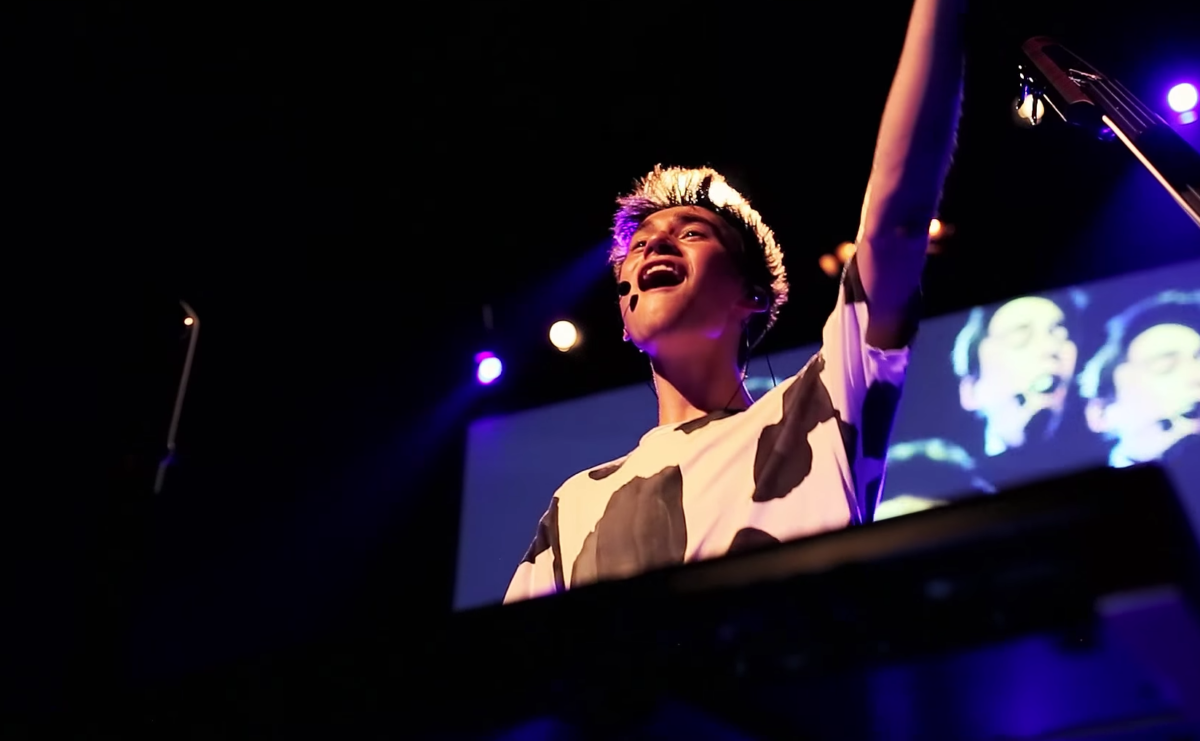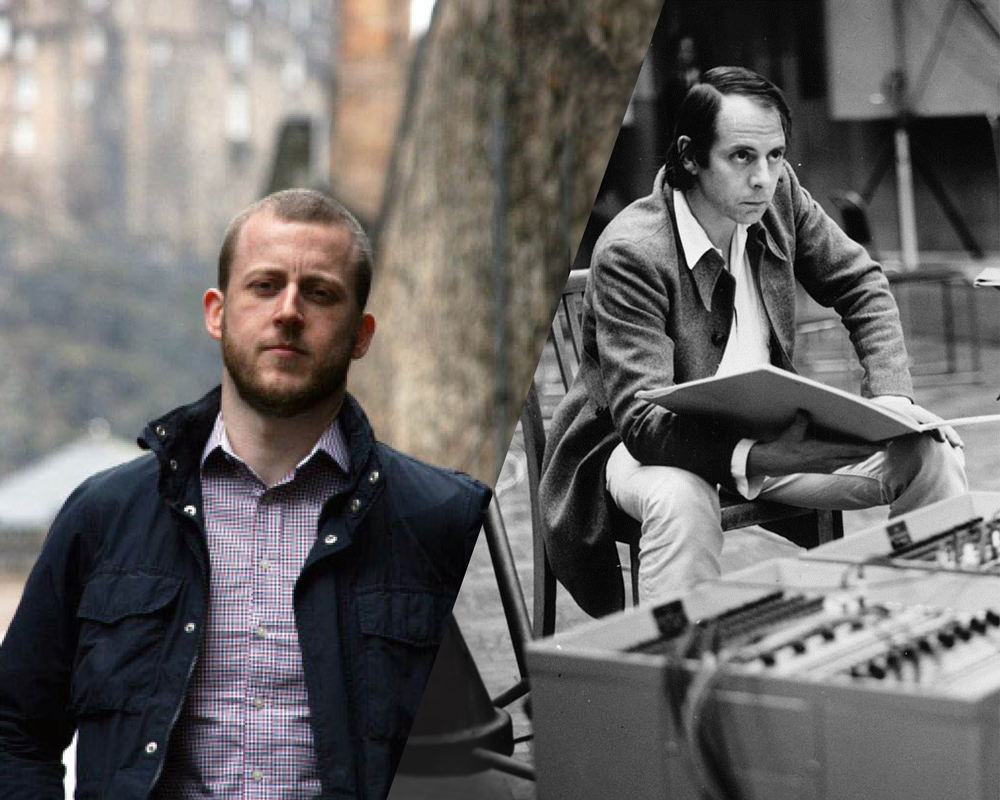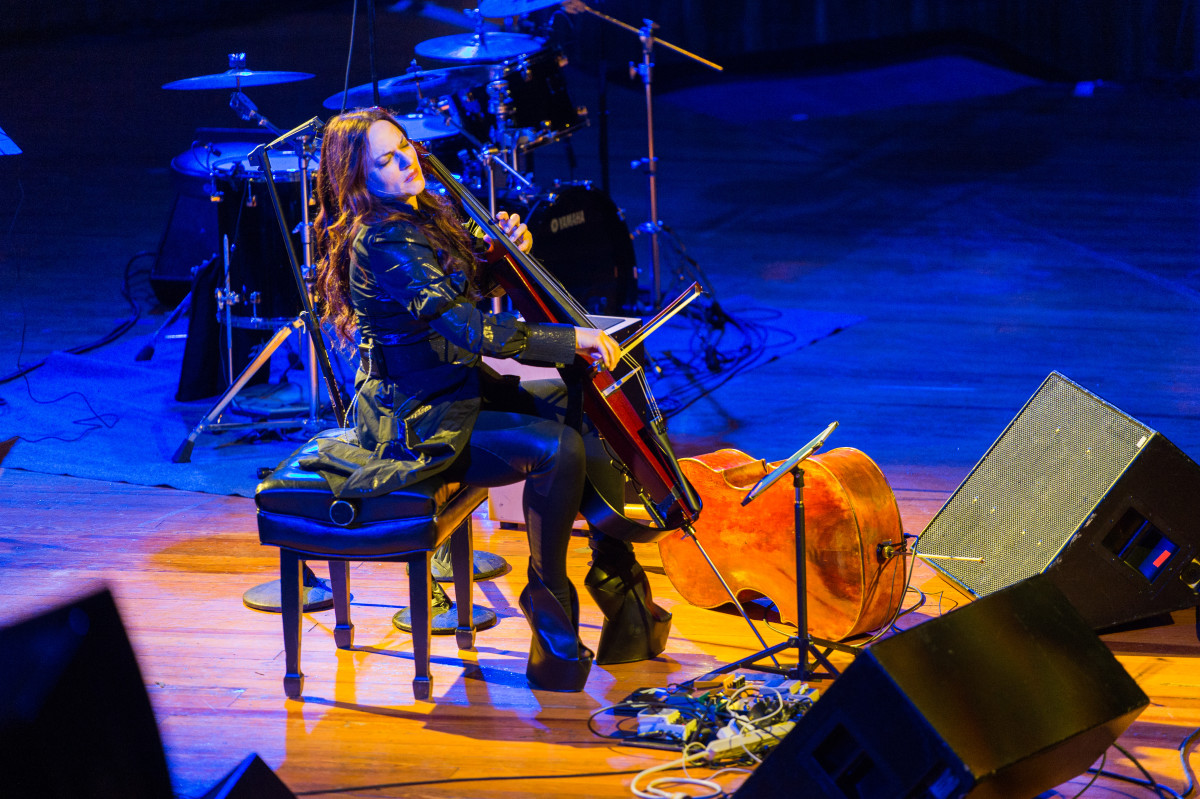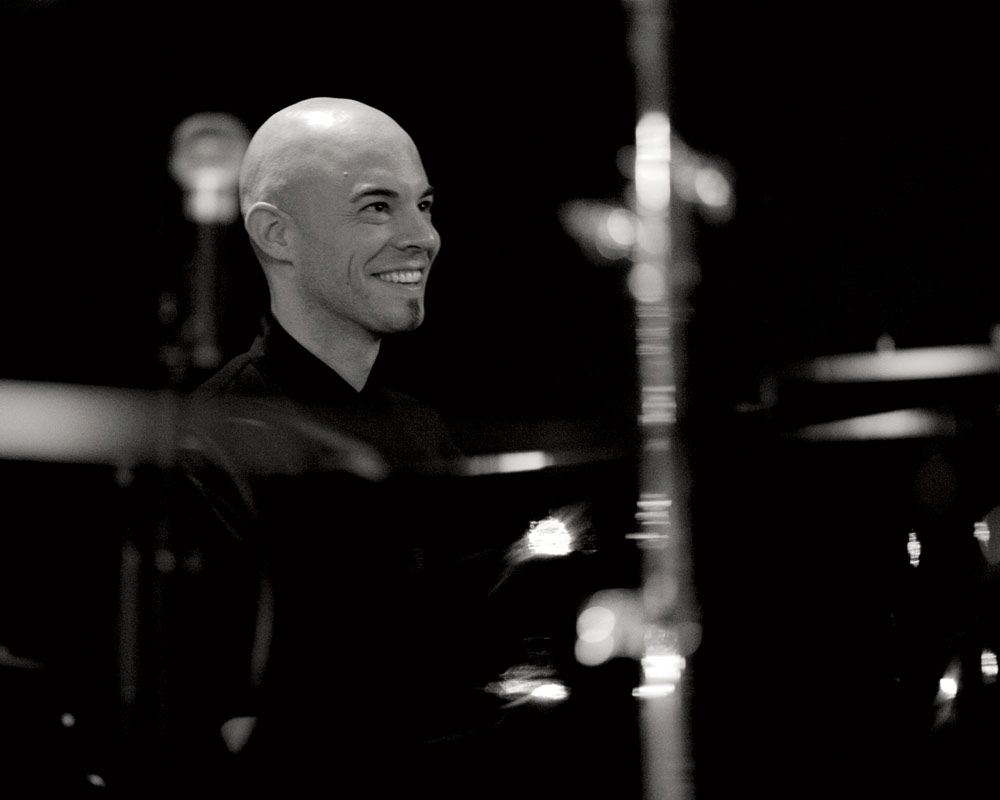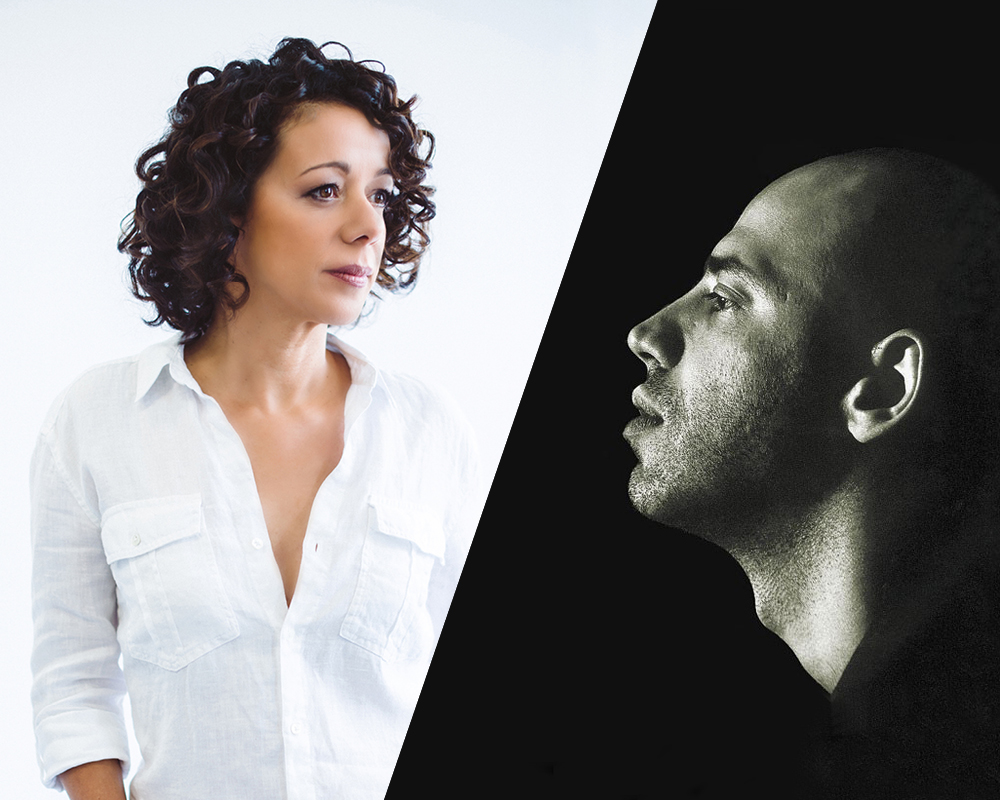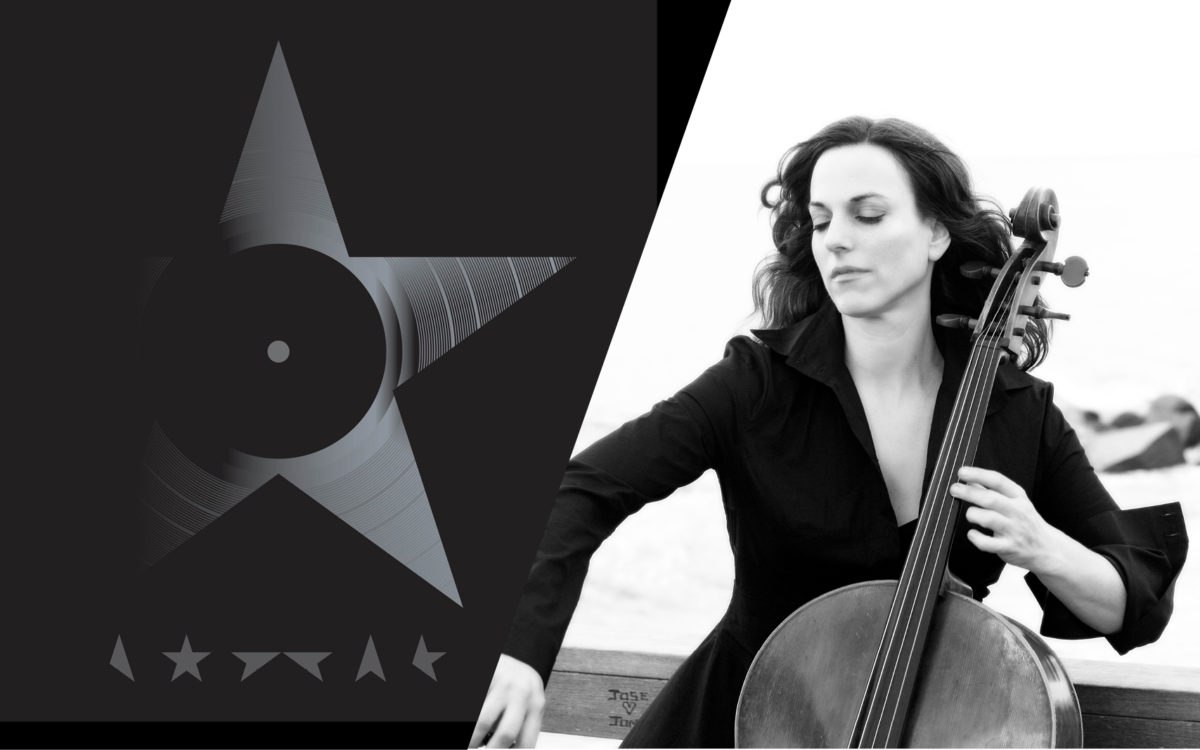A Study in Contrast?
If you want to know what the upcoming 2016-17 season of MIT’s Sounding Series is all about, you need look no further than its two inaugural concerts in September 2016. The first, a performance by the English pianist Simon Smith, features the work of Karlheinz Stockhausen, an icon of 20th century modernism known for his ambitious avant-gardism and imaginative theatrics. (He is perhaps best known for his Helicopter String Quartet, in which four performers are helicoptered through the air while the sounds of their instruments—along with the rumble of the rotors—are amplified and broadcast to the audience below.) The second concert of the season is a performance by the Kaynak Pipers Band, a traditional Bulgarian bagpiping ensemble playing centuries-old music seldom heard outside the Rhodope Mountains.
Stockhausen and Bulgarian bagpipers: It’s hard to imagine a more acute study in contrasts. They represent the two polar extremes of the season, which will showcase everything from symphonic rock to Japanese koto music to the jazz legend Joe Lovano.
Ever-Blurring Boundaries
But the initial impression of difference is misleading—which is exactly the point, says Evan Ziporyn, faculty director of the MIT Center for Art, Science & Technology (CAST) and curator of the series. Stockhausen’s early electronic music pioneered the use of found sounds and global music samples, decades ahead of electronica and hip-hop, Ziporyn says. And there is something almost avant-garde about the music of the Bulgarian bagpipers, with its lopsided time signatures and flashes of dissonance. Ziporyn’s hope is that the season will lay bare the ever-blurring boundaries between contemporary and world music.
It has become something of a tradition for the MIT Sounding series to be anchored by great contemporary experimenters—past years have featured the work of pioneering sound artist Alvin Lucier and influential experimental composer Morton Feldman—and the Stockhausen program sets a high musical and conceptual bar. Smith will be performing a career-spanning selection of Stockhausen’s Klavierstucke (piano pieces), which run the gamut from the subtlest studies of timbre and technique to daring compositional experimentations that require the performer to vocalize and pluck the piano strings. “Stockhausen is a hugely important figure who is somewhat forgotten about in this country,” Ziporyn says. Stockhausen’s profound influence reaches beyond the world of post-modern composition—admirers include Bjork and the Beatles, who featured his portrait on the cover of their 1967 album “Sgt. Pepper’s Lonely Hearts Club Band.” Ziporyn describes Stockhausen as “revolutionary, explosive and influential,” a visionary who shares as much with today’s electronic innovators as his avant-garde peers.
“He upped the ante on how ‘out’ solo piano could be,” says Ziporyn. “[It’s] impossible to conceive of everything from Cecil Taylor to the Ligeti Etudes to the piano solo on Aladdin Sane without him.”
Experimentation and Collaboration
Throughout the season, fittingly, a sense of experimentation prevails. In December, jazz prodigy Jacob Collier, best known for his inventive YouTube videos, will bring his genre-spanning, Internet-age music to the stage with a one-man performance vehicle developed in partnership with MIT Media Lab graduate student Ben Bloomberg. Then there are the many exciting collaborations between students and visiting artists: The MIT Symphony Orchestra will work with two MIT professors, MacArthur Prize-winning composer John Harbison and Guitar Hero inventor Eran Egozy; the MIT Vocal Jazz Ensemble will collaborate with the iconic Brazilian jazz singer Luciana Souza; and the MIT Wind Ensemble will perform a piece commissioned by them by the famed Argentinian composer and pianist Guillermo Klein. Students will have the opportunity to work directly with the artists during residencies throughout the season.
In March, the annual Rick & Terry Stone Concert will feature Distinguished Visiting Artist Maya Beiser in a new cello concerto, arranged by Ziporyn, based on David Bowie’s final album “Black Star.” Ziporyn’s interest in the late glam rock icon’s work became permanently piqued this past winter, when he organized a tribute concert of Philip Glass symphonies based on Bowie’s music.
“[The concert] turned out to be an extremely emotional experience,” Ziporyn says.
Beiser was a logical collaborator, as the two have worked together many times in the past, most recently on Uncovered, the cellist’s critically acclaimed album of rock ‘n’ roll covers, which she presented at MIT Sounding last season.

Diverse and One-of-a-Kind
The other side of the coin, of course, is the diverse representation of music from around the globe. Some of this season’s artists, like the Kaynak Pipers Band and the mbira players Fradreck Mujuru and Erica Azim, stick fairly close to their roots. Others approach their chosen traditions with omnivorous experimentation—for instance, the jazz-trained Japanese koto and shamisen player Sumie Kaneko, who will collaborate with MIT’s Balinese music ensemble Gamelan Galak Tika in December, or the one-of-a-kind partnership between classical viola and Middle Eastern percussion that is DuoJalal.
As unfamiliar as this music may sound to mainstream ears, “it’s all about what your vantage point is,” Ziporyn says. And in the case of this season’s MIT Sounding series, “the vantage point is just being here, now—and being able to incorporate anything.”

